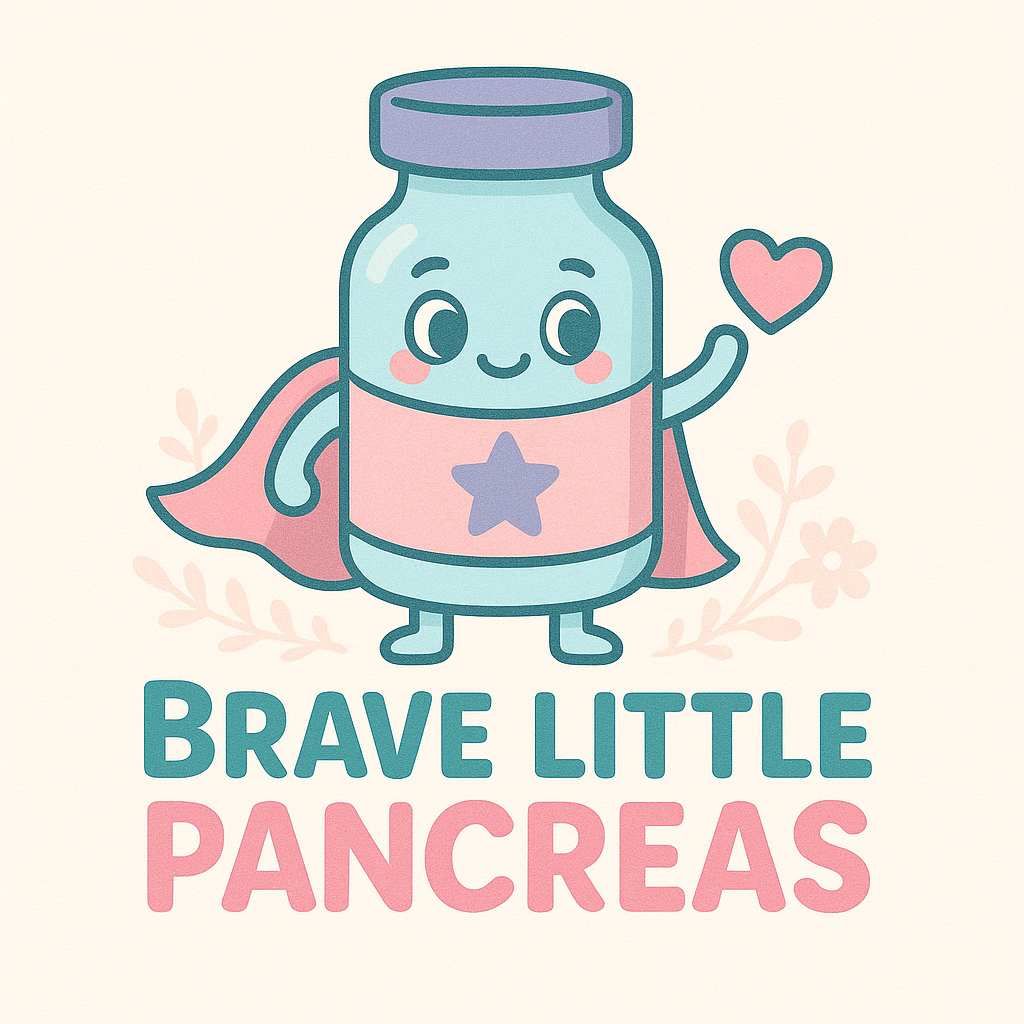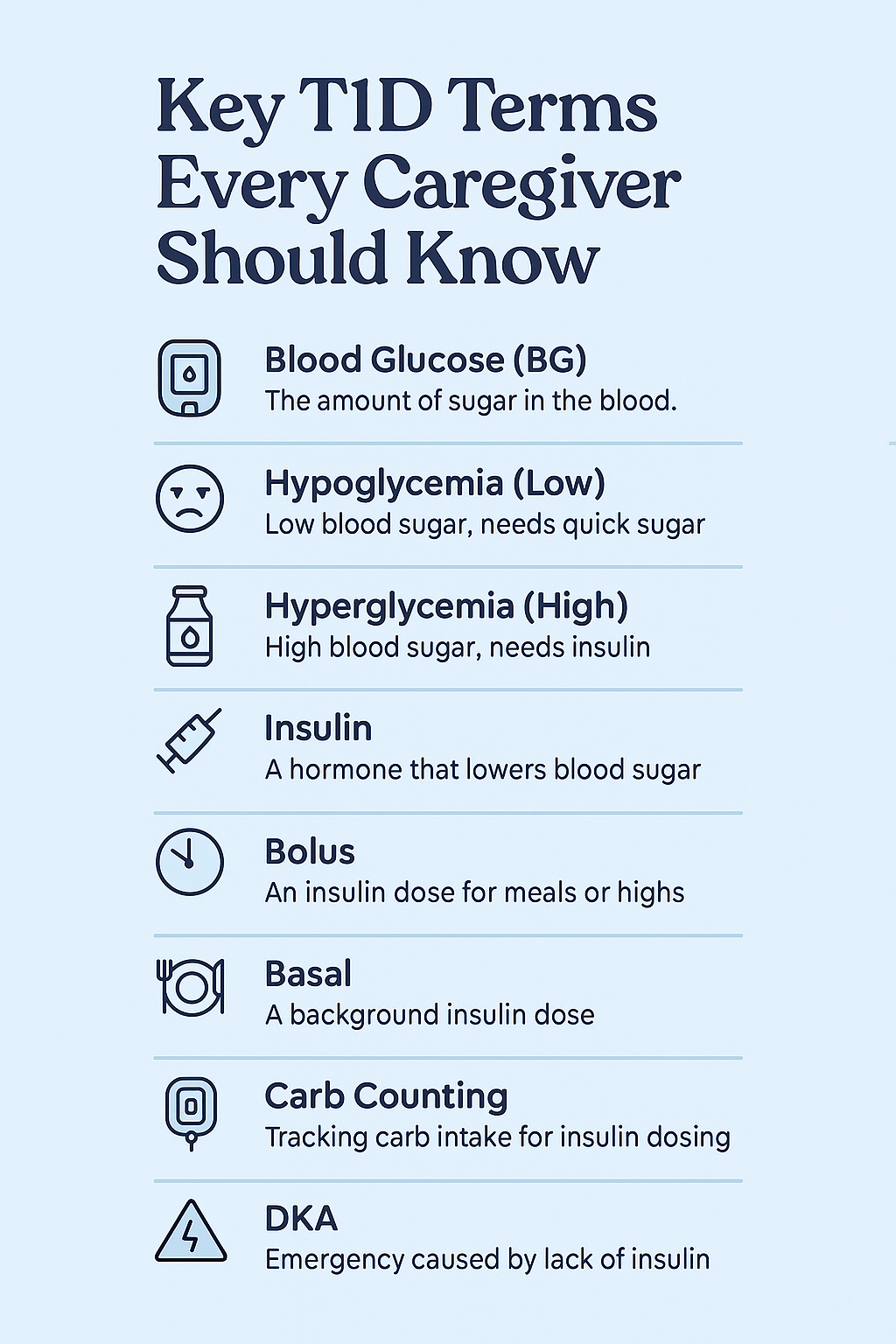Learning Goal
By the end of this lesson, caregivers will be able to recognize and use the most important Type 1 Diabetes terms in everyday care situations.
Diabetes has its own language. At first, it can feel overwhelming — like learning a new subject. But knowing these terms helps you communicate clearly with doctors, teachers, and your child. It also helps you act quickly in emergencies.
Core Terms Every Caregiver Must Know
-
The amount of sugar in the blood, measured in mg/dL.
-
The life-saving hormone given by injection or pump to let sugar enter the body’s cells for energy.
-
Blood sugar below 70 mg/dL. Symptoms: shaky, sweaty, confused. Needs quick sugar.
-
Blood sugar above target (often >180 mg/dL). Symptoms: thirsty, frequent urination, tired. Needs insulin and monitoring.
-
A dose of insulin given for meals or to correct a high.
-
Background insulin that keeps blood sugar steady all day/night.
-
Tracking how many carbs a child eats to calculate insulin doses.
-
A device worn on the body that checks blood sugar continuously.
-
A dangerous emergency caused by very high blood sugar and lack of insulin.
-
Emergency medicine for severe lows (used if the child is unconscious).
-
Chemicals in the body when there’s not enough insulin. Checked with urine or blood strips.


